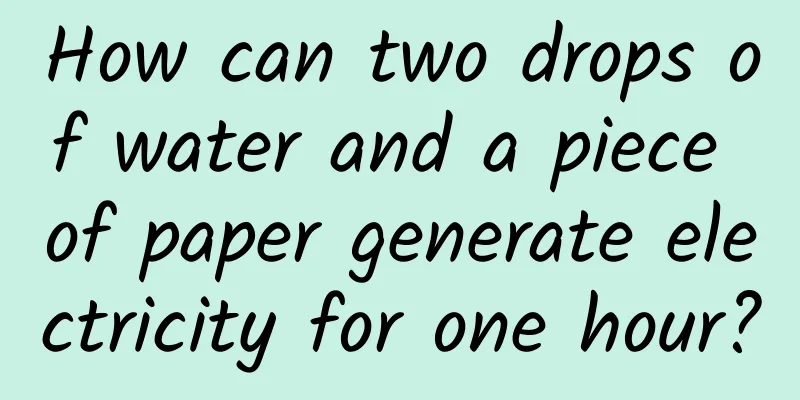New energy vehicles must achieve low-carbon power batteries through cost

|
At present, the number of new energy vehicles in the world exceeds 2 million, most of which use lithium batteries for energy storage. On June 21, Huang Xuenong, director of the Electricity Department of the National Energy Administration, said at the Qinghai Lithium Industry Summit Forum hosted by the Ministry of Industry and Information Technology, the Ministry of Science and Technology and the China Electric Vehicle 100 Forum that the lithium battery industry is facing a very rare development opportunity and broad development space. In recent years, the production and sales of new energy vehicles in my country have shown explosive growth. The surge in sales of electric vehicles has led to the rapid development of the power battery industry and the strong demand for lithium resources, bringing development opportunities to the entire upstream and downstream industry chain. At present, how to develop the lithium battery industry, cultivate lithium resources, materials and power battery companies with global competitiveness, achieve coordinated development of the entire industrial chain, and establish a good industrial ecology to promote the sustainable and healthy development of the electric vehicle industry. At this forum, experts, scholars and entrepreneurs from the industry discussed the above issues. Lithium battery market demand growth As an emerging industry, every step of development of new energy vehicles, led by pure electric models, attracts attention. From being a hot topic that entered the market with a trial mentality a few years ago to becoming the fastest growing product in the domestic automobile market today, new energy vehicles have been favored by many consumers. It is hard to imagine that it took less than five years for the annual sales of new energy vehicles to grow from less than 5,000 vehicles to 510,000 vehicles, and the number of vehicles in use to increase from 10,000 vehicles to 1 million vehicles. Driven by the rapid development of the new energy vehicle industry, the demand for power batteries continues to increase. The reporter learned from the official website of the China Electric Vehicle 100 that the total demand for lithium-ion batteries for electric vehicles in China in the first quarter of this year was 1.27GWh, of which about 0.97GWh was used for pure electric vehicles, accounting for 76% of the total. As the production and sales of new energy vehicles continue to grow, the market demand for lithium batteries will continue to expand. Under the influence of factors such as the gradual deepening of technological research and development and increasingly fierce market competition, the types of power batteries have gradually been established. In recent years, the technological development of China's power batteries has been clearly visible: the "Tenth Five-Year Plan" was lithium manganese oxide batteries, the "Eleventh Five-Year Plan" was lithium iron phosphate batteries, the "Twelfth Five-Year Plan" was ternary batteries, and the next five years will be a new generation of lithium-ion power batteries with high specific energy. A few years ago, the range of mainstream pure electric vehicles on the market was generally less than 200 kilometers, and few models had a range of more than 300 kilometers. With the progress in the integration technology of "pure electric drive" power system, the average range of mainstream passenger cars entering regular household use has now increased to more than 300 kilometers. The reporter noticed that the major new energy models launched this year, including the SAIC Roewe RX5EV, BAIC New Energy EX300L, Song EV, Borgward BX5EV and many other models, have performed well in terms of driving range. In addition, the overall technical level of pure electric commercial vehicles is in a leading position in the world and is exported in batches. "The power battery industry has made major breakthroughs. In 2015, there were four Chinese companies among the top ten companies in the world, and this number increased to six last year. This reflects that the development level of China's power battery industry is constantly improving," said Ouyang Minggao, executive vice president of the China Electric Vehicle 100. At the same time, the improvement of power battery level has also driven the development of hybrid technology to a certain extent. Now all major automobile manufacturers have relatively mature hybrid models, especially BYD, SAIC Roewe and other companies have launched plug-in hybrid models on a large scale. Judging from the power batteries installed, influenced by policies, the existing battery technology route for new energy buses has basically been determined. Lithium iron phosphate batteries have an absolute advantage in the field of pure electric buses, and ternary batteries dominate the field of pure electric passenger cars. At the same time, with the improvement of battery technology and mass production, the specific energy of lithium-ion power battery systems is increasing year by year, while the cost is decreasing year by year. "The energy density of power batteries has nearly doubled in the past five years, and the cost is expected to drop to 1 yuan per watt-hour by 2020. Not only that, my country has made significant progress in power battery safety in recent years." Ouyang Minggao said that the relevant domestic technology is already at the leading level in the world. For example, the expansion, testing and modeling prediction of thermal runaway of series batteries were first developed by Chinese companies. Industrial breakthroughs must overcome the "cost barrier" Power batteries are the core components and power sources of new energy vehicles, and occupy an important position in the new energy vehicle industry chain. Influenced by this factor, it will also stimulate the whole society's enthusiasm for investment in this field. The "Research Report on Problems and Suggestions Facing the Development of my country's Automotive Lithium Battery Industry" released this year by the China Electric Vehicle 100 Forum shows that in the first half of 2016 alone, 54 companies announced investment expansion plans totaling 116 billion yuan, which is higher than the planned investment in the power battery sector for the whole of 2015. However, when my country's new energy vehicle subsidy policy began to decline, the problem of overcapacity in lithium batteries gradually emerged. Since the beginning of this year, the decline in subsidies has led to a cliff-like decline in new energy vehicles, which is rare in recent years. Although this number has been alleviated to a certain extent with the release of the subsidy catalog, it took five months this year to barely break through the 100,000 mark. Under such circumstances, it is inevitable that lithium batteries will experience overcapacity. According to statistics, the production capacity of major power batteries exceeded 30GWh at the end of 2015, and more than 70GWh is currently planned and under construction. It is expected that the production capacity will exceed 100GWh in 2018. At the same time, the concentration of the lithium battery market has further increased. In 2015, the market share of the top 10 companies in my country in terms of power battery shipments reached 75.3%. The trend of market share being concentrated in a few companies is very obvious. "At present, the overall production capacity of lithium battery companies may have exceeded the needs of the current market. Even so, the products of truly good battery companies are still in short supply." Wu Zhixin, deputy director of the China Automotive Technology Research Center, believes that the current overcapacity is a structural overcapacity, which may be solved in the future for the rapidly developing new energy vehicle industry. At present, the main reason why new energy vehicles are overly dependent on policies is that new energy vehicles are generally sold at high prices. Even after enjoying dual national and local subsidies, their terminal prices are higher than those of traditional fuel vehicles. How to control the cost of power batteries so that they can enter the homes of ordinary people has become the key to competition in the lithium battery industry. It is reported that, taking the raw material link as an example, the cost of lithium carbonate has been as low as 13,000 yuan/ton, but the market price is more than 150,000 yuan/ton. Ouyang Minggao said frankly that if the price can be reduced to 30,000-50,000 yuan, the raw material cost problem will be basically solved, which is a very important link in solving the problem of high cost of new energy vehicles. Wu Zhixin said that in the future competition of the new energy vehicle industry, power batteries are the top priority. If we can effectively utilize lithium resources, the most critical resource in power batteries, we will control the core areas of the power battery industry, thus grasping the lifeblood of electric vehicles and making lithium available all over the world. Green development model promotes low carbonization "Power batteries often contain a lot of rare cobalt resources, and these resources basically rely on imported supply. The domestic market must pay attention to the issues of material recovery and recycling." Ouyang Minggao said when talking about the necessity of power battery recycling. In fact, half of the cost of new energy vehicles comes from power batteries. It can be said that reducing the cost of power batteries is a "good solution" to solve the problem of excessively high costs of new energy vehicles. Ouyang Minggao did some calculations for everyone: if the internal combustion engine power system is equivalent to the battery power system, the battery is about 100 US dollars (680 yuan) per kilowatt-hour, which is completely equivalent to the traditional internal combustion engine power. In other words, under this condition, the price of new energy vehicles can be basically the same as that of traditional fuel vehicles. Now that the goal has been set, the time node for completion becomes the focus of people's attention. The reporter learned that the global average price of battery systems per kilowatt-hour could reach 1,000 yuan in 2020, and foreign countries may be able to reach 100 euros (760 yuan) in 2020. In fact, the domestic industry's requirements are even higher than theirs, which is also the next direction of the overall new energy industry's efforts. From a long-term perspective, the electrification of the power system needs to be combined with low-carbon energy. At present, due to the problem of electricity sources, electric vehicles cannot be completely said to be "high-carbon" or "low-carbon". The key question is where the electricity for electric vehicles comes from. If electric vehicles are to be low-carbon, they must be combined with low-carbon energy, so that they can achieve near-zero emissions and the highest efficiency. If they are completely generated from coal-fired electricity, they are basically equivalent to internal combustion engine hybrids. In the future, the new energy vehicle industry must be combined with renewable energy. From the perspective of electricity, in order to develop renewable energy, we must also make preparations for energy storage. At present, due to the lack of relevant energy storage facilities, the phenomenon of wind, water and solar power abandonment is very serious. In 2016 alone, 150 billion watt-hours of electricity was wasted in this field, which is equivalent to the electricity demand of 100 million electric vehicles. It should be said that the energy storage function of electric vehicles is the fundamental way to solve the intermittent nature of renewable energy. Ouyang Minggao said that although there are various means of energy storage, from the perspective of scale and cost, the ultimate way out for energy storage still depends on lithium-ion batteries and electric vehicles. In order to achieve this goal, the development of V2G technology has become inevitable. Through this technology, electric vehicles can be charged bidirectionally with the power grid, the power grid can charge electric vehicles, and electric vehicles can be connected to the power grid when not in operation, serving as energy storage devices for the power grid. It is worth noting that as a leader in domestic new energy vehicles, BYD has conducted some explorations and achieved good results. BYD's independently developed AC fast charging pile has this function. According to the latest forecast of the Energy Saving and New Energy Technology Roadmap of the China Society of Automotive Engineers, the production and sales volume of new energy vehicles in China will reach 40% of the total vehicle sales in 2030. Ouyang Minggao is very optimistic about the future of China's new energy vehicle industry. "In 2030, the global sales of new energy vehicles will account for an average of 30%. I believe that China can achieve a 40% market share." As a winner of Toutiao's Qingyun Plan and Baijiahao's Bai+ Plan, the 2019 Baidu Digital Author of the Year, the Baijiahao's Most Popular Author in the Technology Field, the 2019 Sogou Technology and Culture Author, and the 2021 Baijiahao Quarterly Influential Creator, he has won many awards, including the 2013 Sohu Best Industry Media Person, the 2015 China New Media Entrepreneurship Competition Beijing Third Place, the 2015 Guangmang Experience Award, the 2015 China New Media Entrepreneurship Competition Finals Third Place, and the 2018 Baidu Dynamic Annual Powerful Celebrity. |
>>: Porsche and Bosch employees under investigation for suspected involvement in diesel cheating
Recommend
How to deeply interpret those operational professional terms?
"After launching this activity, the daily UV...
iOS 15.4 optimizes 5G, signal is fully restored
Nowadays, 5G technology is developing rapidly, an...
If you see these two words, you bought "fake milk". Here's how to identify it →
Dairy products counter in supermarket There are s...
Ultraviolet rays are "on"! Try your best to whiten your skin but still can't? Learn about the ABC rules →
When summer comes, people will pay more and more ...
Analysis of JD.com’s flash sales products
Various e-commerce software will have some specia...
Good news for wound healing: snails on French tables are not only delicious but also useful!
Produced by: Science Popularization China Author:...
How to avoid “naked” marketing? 4 ways to teach you how to borrow endorsements
Naked marketing is a marketing method with no bra...
How much does it cost to attract investment in Yangzhou’s e-book mini program? What is the investment price for Yangzhou e-book mini program?
How much does it cost to attract investment for t...
Fujin SEO Training: What kind of SEO optimization site is popular? What factors affect optimization?
The quality of web pages determines the optimizat...
What to do after catching a polar bear?
Written by Su Chengyu Jon Aars is a biologist spe...
The secrets of Xigua Video’s recommendation mechanism revealed!
To understand the recommendation mechanism, we mu...
Common commands of the Android system tool dumpsys, effectively obtain device information and discover application crash problems
dumpsys "dumpsys is an executable file in th...
Do fish drink water? Do fish pee? Do fish have a memory of only 7 seconds? Even more interesting is...
Expert of this article: Lin Zhideng, PhD in Zoolo...
2021 China report card is here
Source: CCTV News WeChat Official Account (ID: cc...
I'm so tired because I'm poisoned!!
Audit expert: Yin Tielun Unlike the energetic &qu...









